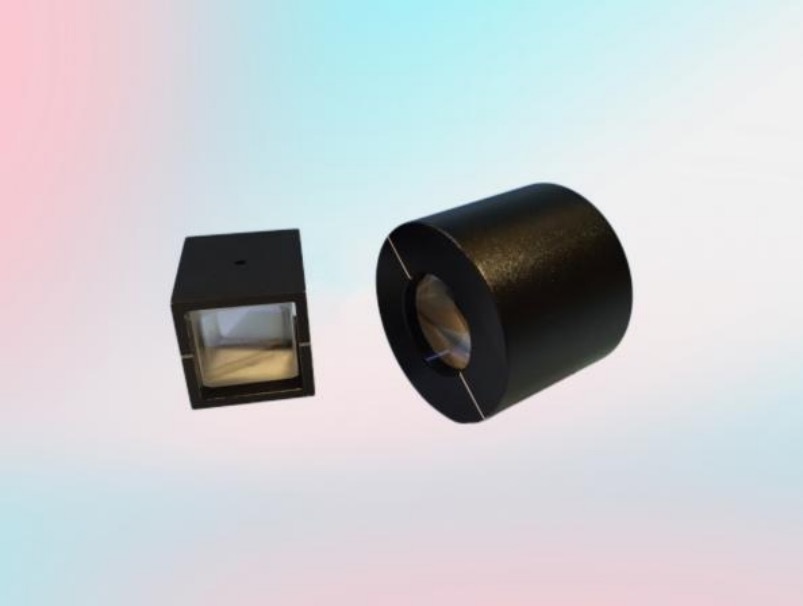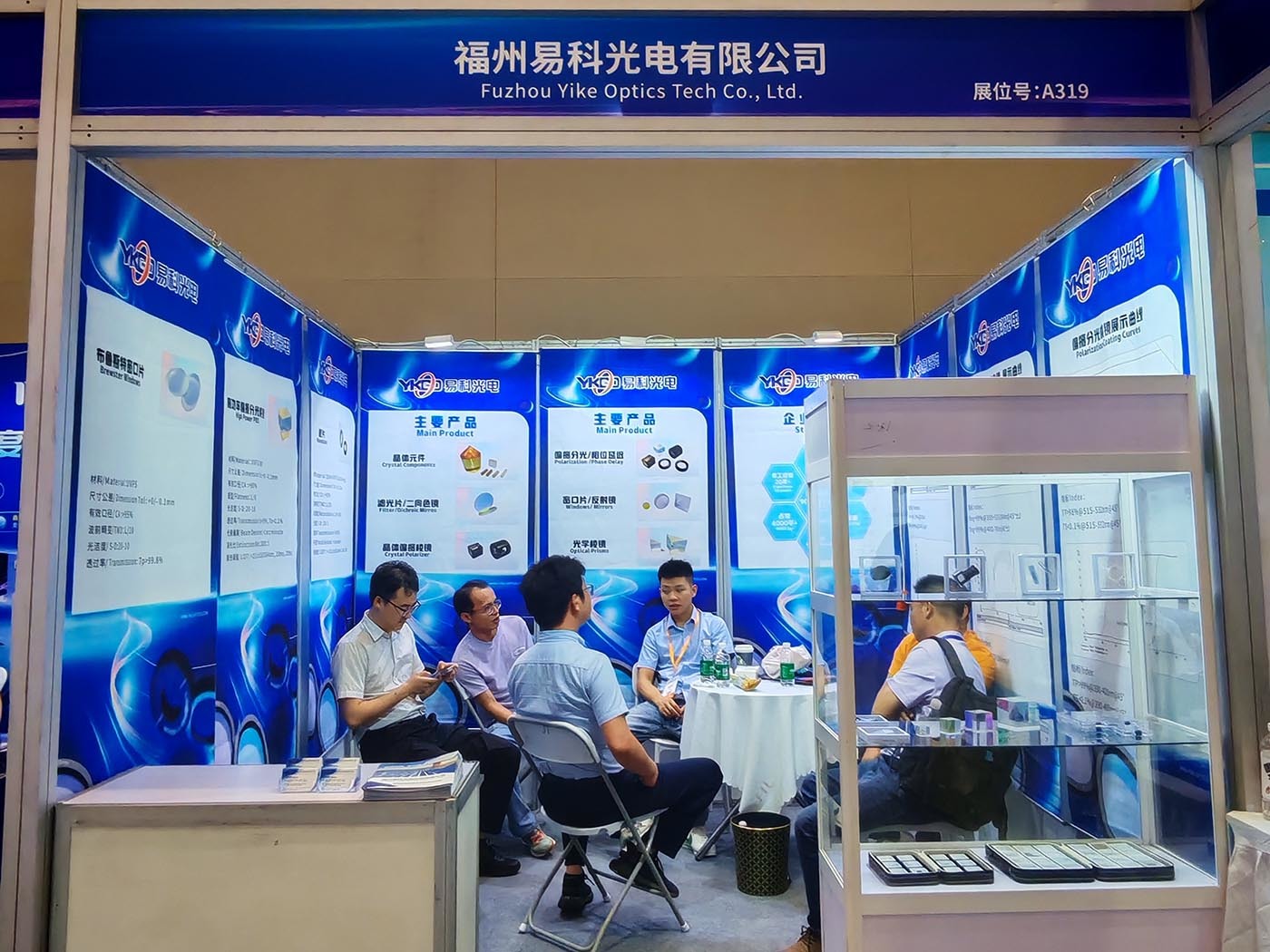Crystal Polarizers: Enhancing Precision and Performance in Advanced Optical Systems
Release Time:
2025-08-06
outline: Crystal polarizers offer unmatched polarization control across UV to IR, boosting optical precision in lasers, imaging, telecom, and scientific instruments.
Crystal Polarizers Enabling Precision and Clarity in Modern Optical Systems
In the rapidly evolving world of optics and photonics, innovation is driven by the demand for higher precision, better light management, and improved imaging performance. From scientific research and medical diagnostics to consumer electronics and defense technologies, optical systems are integral to many aspects of modern life. One of the most crucial yet often overlooked components in these systems is the crystal polarizer. Engineered to selectively control the polarization of light, crystal polarizers play an essential role in enhancing optical performance, improving image quality, and enabling advanced photonic applications.
Crystal polarizers are optical components made from birefringent crystals—materials with two distinct refractive indices depending on the polarization and direction of light passing through them. When unpolarized light enters a birefringent crystal, it is split into two polarized beams: the ordinary ray and the extraordinary ray. By using materials such as calcite, alpha-BBO (Beta Barium Borate), or YVO₄ (Yttrium Orthovanadate), engineers can create highly efficient crystal polarizers that are capable of separating light into well-defined polarization states. This function is critical in a wide variety of applications where precise polarization control is needed.
One of the key advantages of crystal polarizers is their ability to operate over a wide range of wavelengths, including ultraviolet (UV), visible, and infrared (IR) regions. This broad spectral response makes them ideal for multispectral systems, where different light frequencies are used simultaneously. For instance, in spectroscopy, laser systems, and interferometry, maintaining polarization integrity across different wavelengths is essential for accurate results. Crystal polarizers ensure minimal signal loss and high extinction ratios, enabling sharper contrast and more accurate detection of optical signals.
In the realm of laser optics, crystal polarizers are indispensable. Lasers often emit highly polarized light, and controlling that polarization is crucial for beam steering, intensity modulation, and noise reduction. Crystal polarizers are used in laser cavities and beam delivery systems to manage light propagation and optimize performance. Because of their high damage thresholds and low absorption, they can handle intense laser beams without degrading, making them suitable for both low-power and high-power laser applications.
Medical imaging and diagnostic tools also benefit from the use of crystal polarizers. In devices like optical coherence tomography (OCT) and endoscopic imaging systems, polarization-sensitive detection can reveal subtle structural differences in tissues. Crystal polarizers help filter and manage light with great precision, leading to clearer images and more reliable diagnostic outcomes. These applications demand extremely low optical losses and high polarization purity—qualities that crystal polarizers naturally provide.
Another area where crystal polarizers shine is in telecommunications. Fiber optic communication systems rely on precise polarization control to ensure signal integrity over long distances. As data rates increase and network infrastructure becomes more complex, managing polarization distortion becomes critical. Crystal polarizers are used in components such as polarization beam splitters, isolators, and modulators to maintain signal clarity and reduce transmission errors. Their low insertion loss and high extinction ratio make them ideal for these sensitive tasks.
In microscopy, polarizers are used to enhance contrast and visualize anisotropic materials, such as crystals, fibers, or biological tissues. Crystal polarizers, with their excellent polarization performance and transmission characteristics, enable researchers to detect structures that are otherwise invisible under standard illumination. This is especially valuable in material science and biological research, where the ability to observe fine structural details can lead to breakthrough discoveries.
The advantages of crystal polarizers are not limited to laboratory or industrial settings. In the consumer electronics market, devices such as smartphones, augmented reality (AR) headsets, and advanced camera systems integrate optical components that rely on polarization control. Crystal polarizers are used in image sensors, display technologies, and optical filters to improve color accuracy, contrast, and brightness. As consumer expectations rise for visual quality and device performance, the demand for high-precision optical components like crystal polarizers continues to grow.
The manufacturing of crystal polarizers requires precision engineering and advanced optical coating techniques. The alignment of the optical axis, the crystal orientation, and the quality of anti-reflection coatings all affect the final performance of the polarizer. Manufacturers must ensure that each component meets strict tolerances to maintain consistent optical characteristics, especially in applications where even minor deviations can lead to significant errors or performance loss.
Beyond their technical performance, crystal polarizers are also valued for their reliability and long-term stability. Unlike polymer film polarizers, which can degrade over time or under UV exposure, crystal polarizers maintain their optical properties even in harsh environments. This makes them suitable for use in aerospace, military, and outdoor applications where durability and consistent performance are non-negotiable.
Environmental factors also highlight the benefits of using crystal polarizers. In systems exposed to high humidity, temperature fluctuations, or radiation, crystal materials offer superior resistance and longevity. This enhances the robustness of the overall optical system and reduces maintenance requirements. Moreover, as environmental sustainability becomes a greater concern, longer-lasting optical components contribute to reduced waste and energy usage over time.
In conclusion, crystal polarizers are critical components in a wide spectrum of optical applications. Their unmatched ability to manage light polarization with high precision, broad wavelength compatibility, and durability makes them a cornerstone of modern photonic systems. As optical technologies continue to advance and diversify, the role of crystal polarizers will only become more prominent. From scientific research and healthcare to telecommunications and consumer electronics, these components are enabling the next generation of optical innovation—one photon at a time.
Crystal Polarizers: Enhancing Precision and Performance in Advanced Optical Systems
outline: Crystal polarizers offer unmatched polarization control across UV to IR, boosting optical precision in lasers, imaging, telecom, and scientific instruments.
2025-08-06
Understanding the Impact of Polarizing Optics in Modern Electronics: A Comprehensive Guide
outline: Understanding the Impact of Polarizing Optics in Modern Electronics Table of Contents 1. Introduction to Polarizing Optics 2. Fundamental Principles of Polarization 3. Types of Polarizing Optics 3.1 Linear Polarizers 3.2 Circular Polarizers 4. Applications of Polarizing Optics in Electronics 4.1 Polarizing Optics in Di
2025-08-04
outline: The 20th "China Optics Valley" International Optoelectronics Expo (hereinafter referred to as the Optics Expo) opened on May 15, 2025, at the China Optics Valley Science and Technology Convention and Exhibition Center. The expo was hosted by the People's Government of Hubei Province and co-hosted by the People's Government of Wuhan City, the Hubei Provincial Department of Economy and Information Technology, and the Management Committee of Wuhan East Lake High-tech Development Zone. Themed "Light Connects All Things, Intelligence Leads the Future," this year's expo was included for the first time in the United Nations Educational, Scientific and Cultural Organization's (UNESCO) global series of events for the International Day of Light, making it a major focus in the global optoelectronics field.
2025-05-18




